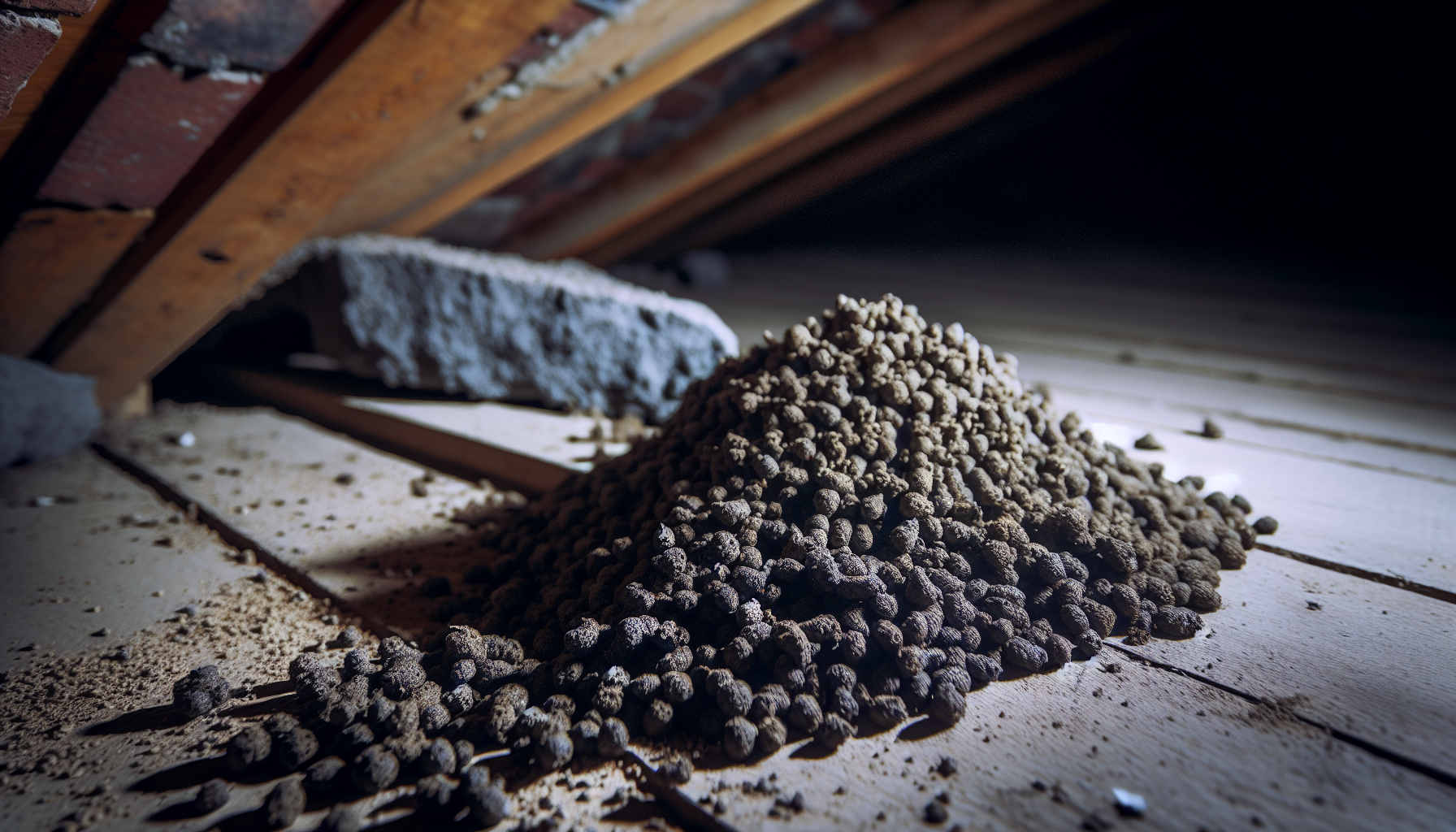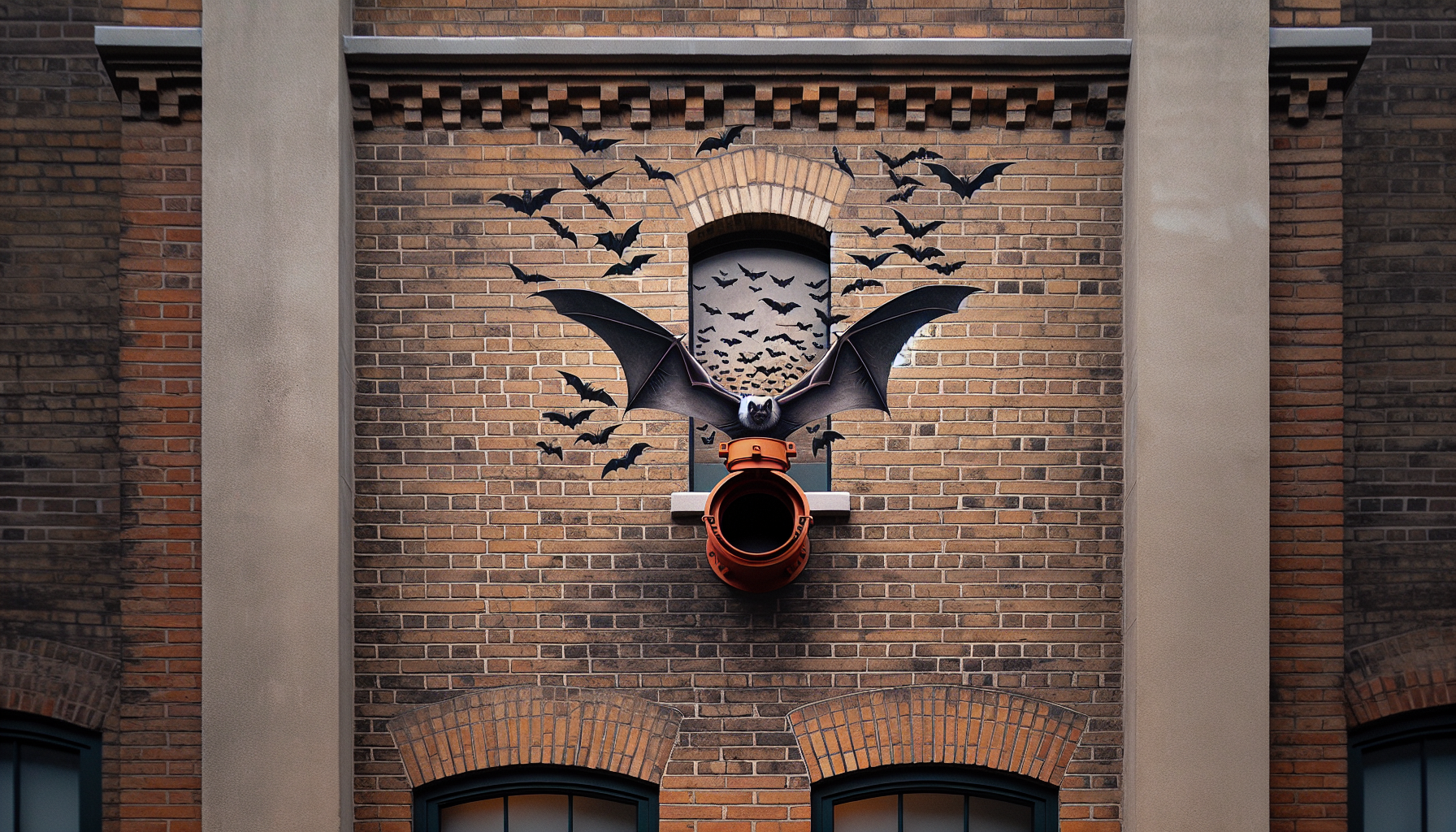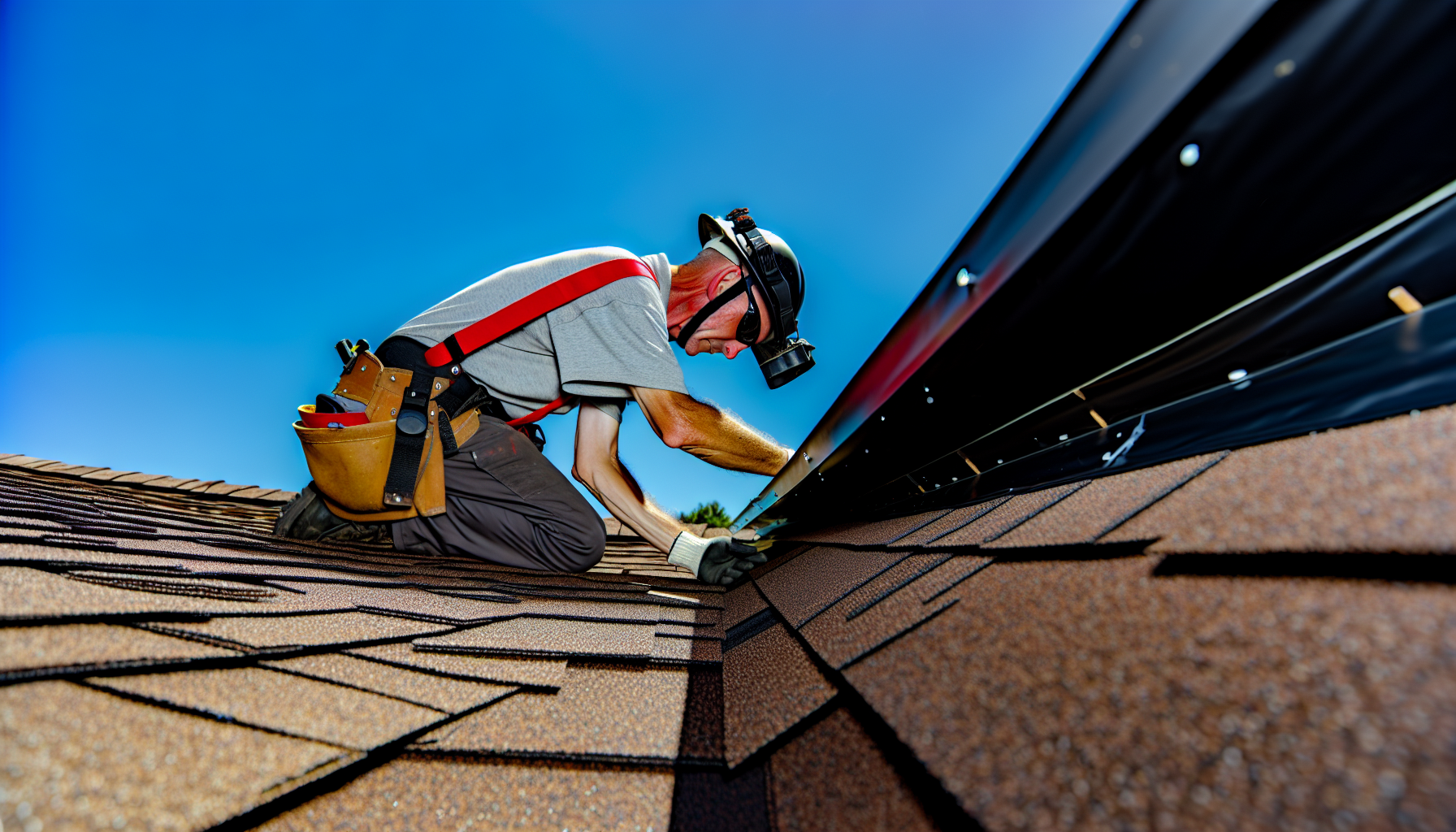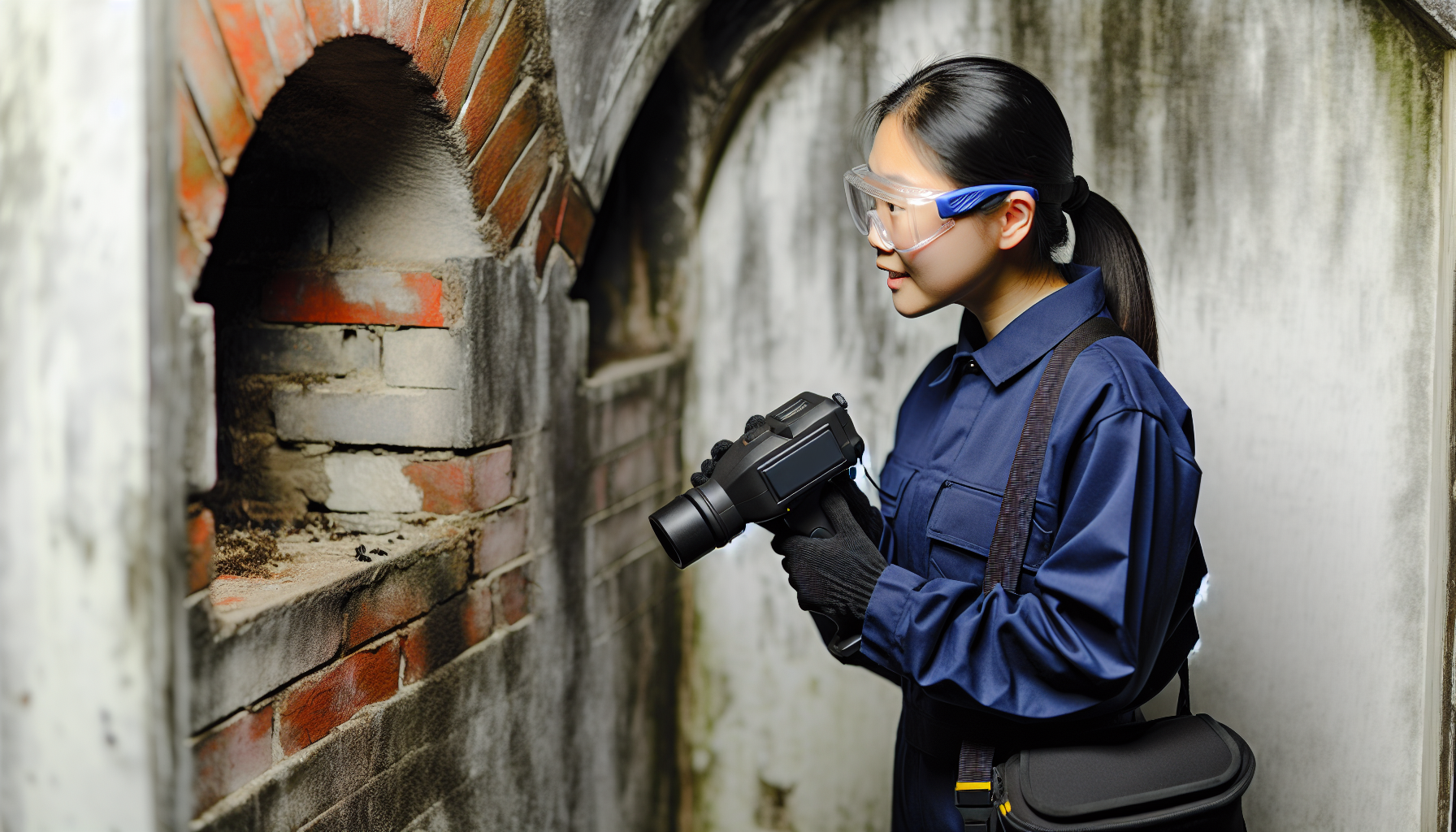Efficient Bat Removal Techniques: Safe and Humane Solutions for Homeowners
Dealing with bats in your home or property can be distressing and hazardous. Bat removal is not just about getting rid of these nocturnal visitors; it’s about doing it safely and in accordance with the law. This article provides homeowners with a step-by-step guide to humane bat exclusion techniques, legal considerations, and when to call in the professionals to manage bat infestations effectively.
Key Takeaways
- Effective bat removal requires identifying bat infestations through signs such as ammonia scent and bat droppings, understanding health risks like histoplasmosis and rabies, and recognizing the particular species present in South Carolina.
- Humane bat removal methods include the use of bat valves and one-way doors to allow for safe exit and exclusion techniques to seal entry points. Professional services should be used to manage removal and ensure compliance with legal protections.
- Preventing future bat infestations involves regular maintenance of roofs and attics, reducing attractants such as outdoor lighting and water sources, and being mindful of the bat maternity season and legal considerations for removal.
Identifying a Bat Infestation

Have you been noticing unusual signs such as:
- rub marks
- a pungent ammonia scent
- small openings in your property
- piles of bat droppings, also known as bat guano
These are clear indicators of a bat infestation. Bats can enter through openings as small as 3/8 inch, often going undetected until their presence becomes a concern.
In South Carolina, the culprits are often the following South Carolina bats species:
- Free-tailed bat
- Big brown bat
- Evening bat
- Tri-colored bat
While these species play a key role in insect population control, they can also present health risks, such as transmitting histoplasmosis. This fungus, residing in bat droppings, can affect both humans and animals.
Bat Species in South Carolina
In South Carolina, we share our environment with 14 species of bats, including the big brown bat, Mexican free-tailed bat, and red bat, among others. These bats feast on a diverse array of insects, including those impacting pines and hardwoods, as well as mosquitoes and crop-damaging insects. The balance of our ecosystem is significantly maintained by bat colonies through their control of insect populations.
However, their presence can become a nuisance when they find their way into our homes. Bats are capable of fitting through a hole as small as a dime and often roost in small, secluded spaces. Sealing potential entry points in your home becomes highly important, particularly in areas such as Goose Creek, Johns Island, and Charleston SC, where bat infestations frequently occur.
Health Risks Associated with Bats
While bats are beneficial for our environment, their presence in our homes can pose serious health risks. Bats are carriers of diseases, including histoplasmosis and rabies, that can pose a significant threat to human health. Given these health risks, the necessity for bat removal services in South Carolina becomes paramount for the safety of homeowners and to ensure bats are treated humanely.
Histoplasmosis is a medical condition resulting from exposure to a fungus found in bat droppings. Humans can contract this disease by inhaling spores in environments containing bat guano. Furthermore, attempting to remove a bat with bare hands poses potential risks due to the small teeth of bats that may cause unnoticed bites, as well as the potential transmission of diseases such as rabies. If an individual experiences a bat bite or scratch, it’s imperative to promptly seek medical attention.
Humane Bat Removal Methods

Dealing with a bat infestation involves more than just eviction. It’s about ensuring a safe and humane process that respects the bats’ role in our ecosystem. Fortunately, ethical bat removal methods, such as the use of bat valves and one-way doors, allow bats to exit a building while preventing their re-entry. This safe and non-lethal approach respects the bats’ natural behaviors while ensuring they don’t return to the premises.
Following the exit of bats from the building, the subsequent step is to introduce exclusion techniques. These include:
- Sealing all potential secondary openings and entry points, thereby preventing bats from re-entering the building.
- Completing a comprehensive attic inspection.
- Implementing bat valves.
- Sealing the final entry point to deter potential future infestations.
The entire bat removal process usually spans over 3-7 days and includes identifying bat entry points, implementing bat valves, completing a comprehensive attic inspection, and finally sealing the final entry point to deter potential future infestations.
Bat Valves and One-Way Doors
Bat valves and one-way doors play a crucial role in the humane bat removal process. These devices are specifically engineered to permit bats to leave a building and prevent their re-entry, thus ensuring a non-lethal removal procedure. Essentially, these mechanisms are installed at the exit points for bats, enabling them to leave while preventing re-entry. This ensures that bats cannot use the same entry point to return.
The construction of bat valves and one-way doors requires durable and flexible materials. These include:
- Plastic netting or sheeting
- Netting
- Trash bags
- Caulk tubes
- Hardware cloth
- Gutter materials
Utilizing these materials, the effectiveness of bat valves, and one-way doors, specifically the bat valve specifically, in keeping bats out without causing harm can be ensured.
Exclusion Techniques
Effective bat exclusion goes beyond just installing bat valves and one-way doors. It involves a comprehensive approach that includes sealing all potential entry points with high-quality materials and implementing proper maintenance to prevent bats from re-entering a home or building. Bats commonly utilize small openings, such as cracks, vents, gaps in windows and doors, damaged roofing, chimneys, and gaps in framing as entry points into homes or buildings.
Materials like hardware cloth and caulk are frequently used in bat exclusion techniques for their effectiveness. It’s important to locate the entrances and use filler material and high-quality caulk for sealing. Additionally, window screening or hardware cloth can be used for covering louvered vents or larger openings. For optimal bat exclusion, it is recommended to abstain from bat proofing during May to July, a period when young bats are unable to fly. Regular maintenance should be conducted once a month during active seasons to ensure effectiveness.
Bat Control and Prevention Tips

Beyond bat removal, long-term bat control and prevention is key to maintaining a bat-free environment. Preventing potential bat infestations can be achieved through regular maintenance of roofs and attics, in addition to reducing attractants. It’s not just about dealing with an existing bat problem, but about taking proactive measures to prevent bats from becoming a nuisance in the first place.
Maintenance strategies include:
- Conducting regular inspections of the roof
- Repairing any holes or gaps
- Installing caps on chimneys and vents
- Adding screens to windows
- Sealing other potential entry points
Furthermore, minimizing attractants such as outdoor lighting and water sources can deter bats from establishing a bats roost in or near your home. Remember, bats are attracted to locations that offer food and water. Reducing these attractants makes your home less attractive for bats to roost or feed.
Roof and Attic Maintenance
Your roof and attic are prime real estate for bats. Regular maintenance is essential to prevent them from gaining access. Here are some steps to take:
- Initiate a thorough inspection upon observing any indications of bat infestation.
- Remove bats from your roof and attic.
- Comprehensive sealing of all potential entry points.
- Consider using ridge guard for shingled roofs to protect the ridge vents, which is a common entry point for bats.
Typical access points for bats in roofs and attics consist of:
- Small openings
- Deteriorating wood
- Compromised roofs
- Open gable vents with insecure screens
- Open ridge
- Corners
- Eaves
- Louvres
Ensuring these areas are well-maintained and secure can help keep nuisance bats at bay.
Minimizing Attractants
One of the most effective ways to prevent bat infestations is to reduce factors that attract them to your property. Bats are drawn to areas that offer food and water, so reducing these attractants can help deter them. Outdoor lighting, for instance, attracts nocturnal insects, creating a veritable buffet for bats. So, one way to decrease bat presence is by keeping outside lights off at night.
Water sources near your property are another major attractant for bats. Reducing water sources can make your property less appealing to these nocturnal creatures. By employing these measures, you can make your surroundings less inviting for bats and prevent potential infestations.
Hiring a Professional for Bat Removal

While some may be tempted to tackle bat infestations on their own, it’s crucial to understand the importance of professional intervention. Given the potential health risks posed by bats, and their legal protection, the use of humane and legally compliant removal techniques becomes necessary. Animal Pros, for instance, is a renowned bat removal company in greater Charleston, South Carolina, known for its proficiency in managing bat infestations.
The cost of professional bat removal services varies depending on several factors. These include the level of damage incurred by the bats, the seriousness of the infestation, and the required cleanup after the bats have been removed. Choosing a professional service that not only has the required expertise but also comprehends the specifics of local regulations and bat behavior is vital.
Choosing the Right Expert
The right expert can make all the difference when it comes to bat removal. A bat removal expert should possess the following:
- Required skills for effectively eliminating bats from residential properties
- Substantial experience in evaluating and addressing bat infestations
- Necessary tools and methods needed for the safe removal of bats and the thorough sealing of entry points
In addition to experience and skills, it’s crucial to ensure that a bat removal service possesses the appropriate licensing and permits. The type of license required, such as a nuisance wildlife control license or a Wildlife Damage Control Agent (WDCA) license, varies by state. Selecting a licensed and experienced expert guarantees a safe and effective bat removal process.
Cost of Bat Removal Services
The cost of bat removal services can vary significantly, depending on several factors. For instance, the cost is influenced by:
- The duration of bat roosting
- Colony size
- Number of potential entry points on the property
- The extent of damage requiring repair
On average, professional sc bat removal services in South Carolina cost around $471, with a typical range between $227 and $720.
The cost of bat waste cleanup can also vary greatly, ranging between $500 to $8,500, based on the severity of the infestation and the specific services needed. It’s important to note that the species of bat does not have a direct impact on the pricing for removal services. The cost may vary, depending on the severity of the infestation and other variables.
Bat Maternity Season and Legal Considerations

When planning for bat removal, one must also consider the bat maternity season and legal regulations. Bat maternity season, which usually occurs between April and August, is the time when female bats give birth and care for their young in colonies. Interfering with these colonies can lead to considerable stress for the bats and is frequently illegal.
Moreover, many areas, including South Carolina, offer legal protections to bats, making it necessary to employ humane and legally compliant removal methods. The optimal time to exclude a bat colony is mid-August when the pups are weaned and able to fly, ensuring that the removal process does not disturb flightless young bats.
This is why it’s against the law to evict bats during the maternity season, which usually occurs from May to August.
Timing of Bat Removal
Timing is crucial when it comes to bat removal. Ideally, bat removal should be avoided during the maternity season to prevent disruption of maternal colonies. In South Carolina, the bat maternity season spans from June 1 to July 31. Excluding bats during this period may lead to flightless young being trapped and potentially abandoned, posing a significant conservation concern.
Also worth noting is that obstructing bats from accessing their roosts during the maternity season is forbidden by law. If a bat infestation occurs during this time, it’s advisable to wait until after the maternity season ends in mid-August before excluding the bats and conducting repairs to prevent future infestations.
Legal Protection for Bats
In numerous regions, bats enjoy legal protection due to their endangered status and ecological importance, notably in their role of controlling insect populations. In South Carolina, specific legal protections are in place to prevent the killing or harming of any bat species, reflecting their classification as endangered and the need for their conservation.
This legal protection dictates that the only suitable removal method to eliminate bats is humane bat exclusion. This method ensures that bats can exit the structure safely and prevents them from re-entering, in accordance with wildlife protection regulations. Therefore, it’s crucial to comply with local wildlife protection laws and employ humane removal techniques.
Summary
Bats, while beneficial to our ecosystem, can pose challenges when they decide to roost in our homes. From identifying a bat infestation to employing humane removal methods and preventing future infestations, managing a bat problem requires a comprehensive approach. It’s essential to consider bat maternity season and adhere to local regulations to ensure a safe and effective removal process. With the right knowledge and professional help, homeowners can effectively address bat infestations, ensuring a safe living environment while respecting these integral creatures of our ecosystem.
Frequently Asked Questions
How much does it cost to get rid of bats?
Bat removal can cost between $250 and $650, but may go up to over $8,000 for severe infestations due to the damage they cause to homes and potential health risks from their droppings. It’s also important to consider the protection laws for these endangered animals.
How does an exterminator get rid of bats?
An exterminator gets rid of bats by using a process called exclusion, which involves sealing the primary exits that bats use with one-way doors. Professional bat exclusion is the recommended method for handling larger infestations and preventing re-entry.
When can bats be removed in South Carolina?
It’s best to remove bats in South Carolina during the early spring (March-April) or in the fall (August-October) to avoid trapping flightless young (pups) within the structure.
How do I get rid of bats ASAP?
To get rid of bats ASAP, use bright lights, high-frequency sound emitters, or repellents like mothballs, peppermint, and eucalyptus. These methods can help deter bats from your property.
What are the signs of a bat infestation?
If you notice rub marks, a pungent ammonia scent, small openings, and bat guano or droppings, you may have a bat infestation in your home. Take action to address the issue promptly.
